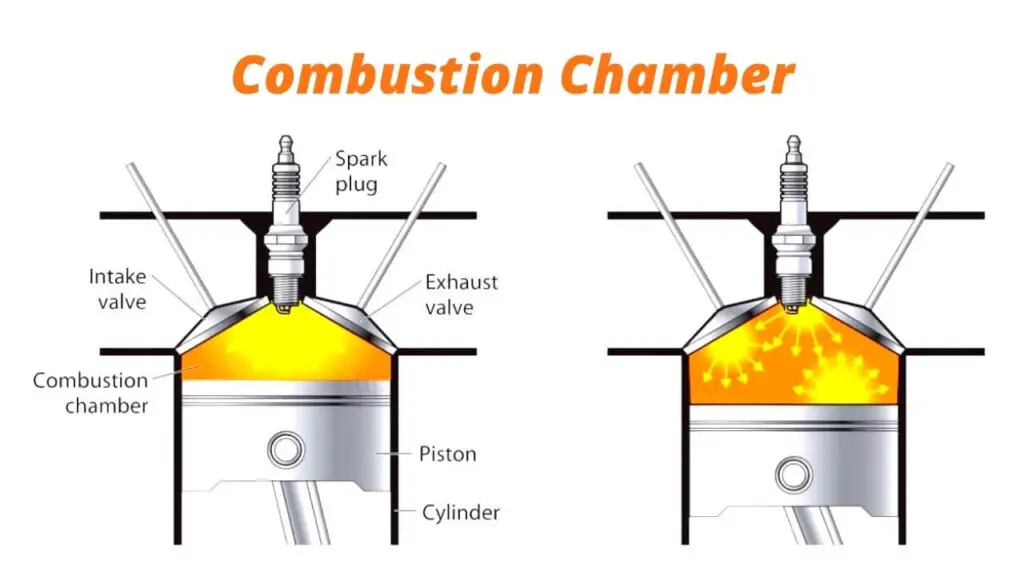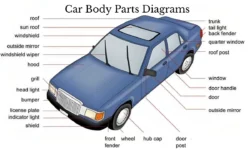What is Combustion Chamber?
A combustion chamber is part of an internal combustion engine in which the fuel is burned at a constant temperature with air and gas turbine, where the air is expanded to generate electricity. For steam engines, the term has also been used for an extension of the firebox which is used to allow a more complete combustion process.
In an internal combustion engine, the pressure caused by the burning air/fuel mixture applies direct force to part of the engine (e.g., for a piston engine, the force is applied to the top of the piston), which converts the gas pressure into mechanical energy (often in the form of a rotating output shaft).
This contrasts an external combustion engine, where the combustion takes place in a separate part of the engine to where the gas pressure is converted into mechanical energy.
Definition
A Combustion Chamber is the area within the Cylinder where the fuel/air mix is ignited. As the piston compresses the fuel/air mix and makes contact with the Spark Plug, the mixture is combusted and pushed out of the Combustion Chamber in the form of energy.
The Cylinder houses many of the important components of an Internal Combustion Engine including the Injector Nozzle, Piston, Spark Plug, Combustion Chamber, and others.
Functions of Combustion Chamber
- It provides a confined space for the combustion of air and fuel mixture
- It houses the inlet & outlet valve for incoming and outgoing of mixture
- It houses and guides the piston
- It helps in proper combustion by proper geometry
- It withstands against the high temperature of combustion
- It prevents to spill out the exhaust of combustion

Types of Combustion Chamber
There are three main types of combustion chambers in use for gas turbine engines.
- Multiple chambers,
- The tubo-annular chamber
- The annular chamber.
1. Multiple Combustion Chamber
This type of combustion chamber is used on centrifugal compressor engines and the earlier types of axial flow compressor engines. It is a direct development of the early type of Whittle combustion chamber.
The major difference is that the Whittle chamber had a reverse flow as illustrated, as this created a considerable pressure loss, the straight-through multiple chambers were developed by Joseph Lucas Limited.
The chambers are disposed around the engine and compressor delivery air is directed by ducts to pass into the individual chambers. Each chamber has an inner flame tube around which there is an air casing. The air passes through the flame tube snout and also between the tube and the outer casing as already described.
2. Tubo-annular Combustion Chamber
The tubo-annular combustion chamber bridges the evolutionary gap between the multiple and annular types. A number of flame tubes are fitted inside a common air casing.
The airflow is similar to that already described. This arrangement combines the ease of overhaul and testing of the multiple systems with the compactness of the annular system.
3. Annular Combustion Chamber
This type of combustion chamber consists of a single flame tube, completely annular in form, which is contained in an inner and outer casing.
The airflow through the flame tube is similar to that already described, the chamber being open at the front to the compressor and at the rear to the turbine nozzles.
The main advantage of the annular chamber is that, for the same power output, the length of the chamber is only 75% of that of a tubo-annular system of the same diameter, resulting in considerable saving of weight and production cost. Another advantage is the elimination of combustion propagation problems from chamber to chamber.
In comparison with a tubo-annular combustion system, the wall area of a comparable annular chamber is much less; consequently, the amount of cooling air required to prevent the burning of the flame tube wall is less, by approximately 15%.
This reduction in cooling air raises the combustion efficiency to virtually eliminate unburned fuel and oxidizes the carbon monoxide to nontoxic carbon dioxide, thus reducing air pollution.





